by Andrew Carr
This essay is the second in a series beginning with “Passages Part I: Paris.”
A few days after my visit to the Louvre, I was taken to The Memorial to the Murdered Jews of Europe, in Berlin. Walking south from the Brandenburg Gate, along the edge of the Tiergarten, I didn’t see it until we were there — an irregular city block covered in rows of massive stone slabs, the tops of which undulated slightly as if arranged upon a gentle hillside. I was told the name of the memorial and encouraged without further preface to make my way in. I was entirely caught off guard. My chest tightened immediately, and I found myself choking back a sob that I did not understand. I had not prepared myself to feel something. I was not looking for anything. I had hardly even left the sidewalk.
In Paris, trying to connect with one of Leonardo’s portraits amid the flux of visitors, meaning had been the result of prolonged consideration, something pursued through observation and analysis, something to find. In Berlin it found me, whatever it was. I didn’t arrive at something compelling; something compelled me. As I began to look around, I wasn’t looking with an eye for what I might fashion from my experience. Rather, I was led by a sort of humble curiosity or wonder at what was happening to me.
You can enter the memorial anywhere. The stones are laid in straight rows so that one can look all the way through to the end where you will come out on the other side. It is not a labyrinth. There are no dead ends or obstructions. There is no single path to take that must be discovered through trial and error.
At first the stones were only a little above the level of the sidewalk. But as I walked further in they began to rise, to the height of headstones in a cemetery, then higher still as the ground sank away, until I was at the bottom of a deep depression, in the shadow of enormous concrete monoliths. The overcast sky above was far away, and the path before me like a narrow street between cold, featureless apartment blocks. At every corner one might turn and find the very same street running away in the same straight rows. And among these faceless corridors, another person would suddenly appear and then quickly disappear again, sometimes crossing my path at a distance, sometimes only feet in front of me.
At the bottom of the memorial, what I felt more than anything, I think, was a sort of fear. The fear of wandering through a world that had closed itself off. Of streets in which no window or door was open. Of storefronts no longer familiar or welcoming. The same remorseless facade around every corner. “I was walking along close to the walls,” writes Kafka in his parable The Cell. “Although there were several doors, if one opened them, one only found oneself standing in front of a dark, smooth rockface, scarcely a handbreadth beyond the threshold.”
Over the course of the 2022 documentary The U.S. and the Holocaust, one can trace the methodical transformation of European streets under the Nazi regime. Step by step, Jews were gradually excluded from all aspects of public participation. “The regime confiscated their radios, canceled their newspaper subscriptions. It expelled Jewish children from state schools, barred their parents from driving or owning a car, banned Jews from parks, cinemas, theaters, concert-halls, and from those few professions that still had been open to them.” Jewish families were deprived of their livelihood and continually evicted, from one apartment after another. Out on the streets themselves gangs of Brownshirt thugs wandered up and down beating anyone they decided looked Jewish.
This system of persecution not only excluded but invaded the lives of European Jews. Any private refuge, any sense of an “inside” to which one might retreat was attacked. In the documentary, Susan Hilsenrath gives an account of her experience on the night of Nov 9th, 1938, remembered as Kristallnacht, or the “Night of Broken Glass”:
“I was nine years old and my brother and I were sleeping in our bedroom. Maybe it was around 11 o’clock. And all of a sudden some bricks and rocks were being thrown through our window. And I was really scared and I covered myself up with my blanket. And my brother who’s a year younger than I am went to the window and he pulled himself up and he looked outside. And he said ‘Susie, it is our neighbors who are throwing the bricks and rocks through the window.’
“Then we were in our parent’s bedroom and we were all huddled together trying to decide what to do. Then they were carrying this lamppost and they smashed it through our front door.”
Eventually, as I continued walking, the ground of the memorial began to ascend. And the stones, as they reached the limits of the park, sank, step by step, back down to street level, until the memorial was only an outline, a rectangle of concrete, flush with but intruding out into the sidewalk before disappearing completely, as if to suggest that the memorial continued out into the rest of the city, underneath the wheels of cars, and pedestrians’ feet, and that the memorial was only the place where the ground fell away for long enough to allow the stones to rise up and reveal the subterranean reality, before closing up again at the end of the block.
Looking back from a bench on the far side, that sense of depth was hidden. Beyond the memorial, the billowing trees of the Tiergarten were a mixture of emerging yellow and departing green. From here one could see scaffolding covering a portion of the memorial, partitioned off for repair. Significant cracks had apparently formed in many of the concrete blocks, and there were arguments about whether inferior materials had been used. Nearby a young boy was jumping from slab to slab. And a couple had found a stone at the perfect height to sit down on and eat lunch. Their dog wanted to hop up and sit with them.
I was told that the city asked people not to walk or climb on the stones, out of respect. That seemed correct and important. The power of that place needed to be preserved. Still, whereas the crowds at the Louvre nearly overwhelmed even the most monumental paintings, sending up an atmosphere of noise and social media awareness through which, if the works were still visible at all, they were also very much changed—here in Berlin, despite carelessness or straightforward irreverence, the place seemed not only undiminished but even enlarged, knitting this disregard into itself, into its own meaning and the meaning of the city. Here was a living picture of the culture’s relationship to its own past. The child, the dog, the scaffolding. These scenes were incorporated, whether they knew it or not, immersed in significance, as I had been.
And despite the contrast between my experience in each city, a confluence of meaning between the works also emerged. The murder and cruelty that the memorial recorded was clarified in juxtaposition to Leonardo’s portrait. For if the painter’s goal was to respect and maintain the interiority of his subject, he terror enacted against Susan Hilsenrath’s family was carried out with the explicit intention of violating, and thereby denying that same fundamental interiority. If Leonardo’s approach acknowledged a sacred dark space into which the observer had no right to intrude, Hilsenrath’s neighbors, in throwing bricks through the children’s window, in smashing through the door, sought to penetrate and degrade that space. The memorial’s concrete stood in staunch commitment to the memory of millions of individuals whose interiority had been violently, systematically denied.

I visited The Memorial to the Murdered Jews of Europe on October 6th. The next morning Hamas carried out its horrific attack on Israel. And as some of the initial details of that atrocity emerged, my mind returned to the memorial. Its stone avenues took on the aspect of an Israeli neighborhood. Over the relentless months that have followed that attack, as Israel’s retaliation has intensified and Palestinian suffering and displacement have grown to staggering levels, those stone corridors in my mind became the streets of Gaza.
The space of the memorial offered a framework within which to imagine and confront what was happening. And in my imagination that space welcomed the suffering of both Israelis and Palestinians. Because it was not a space for adjudicating the conflict, but for honoring the victims, for acknowledging the dignity they had been denied.
In firsthand accounts of those living through this current crisis, anger and grief over the loss of that dignified privacy, that respected interior, is a constant refrain. Here are two survivors of the Nir Oz Kibbutz massacre, recounting their experience of hiding from Hamas in a safe room, holding the door closed because it had no lock:
“They started to try to open the door handle,” said Koren Hazut. “And my husband held the handle, and the four kids and the dog were hiding in a corner… In my worst nightmares, I never imagined it could be so bad, and so cruel, and so humiliating. They wrote Arab notes on the walls, and it was like, ‘We own the place, not you.'”
“They were in my house eating,” said Natali Yohanan. “They watched TV. They watched a show on Netflix. They knew we were inside, and for 12 hours we sat and waited for them to get in and kill us all.”
This image of the militants watching TV in the middle of the massacre is disturbing not only for the jarring callousness it displays, the mixture of cruelty and entertainment, but for another implied message, made explicit by the graffiti left behind: you have no home anymore, we’ve taken it. And the aim of that message, to threaten and harass the interior life, to eradicate that dark seclusion which brings rest and freedom, seems at times almost to have been accomplished by the Israeli military in Gaza. Here are the words of two Palestinian men who tried to return to their homes in Khan Younis early in April after IDF troops had withdrawn:
“I could not believe the destruction I saw,” said Mamdough Khader. “Many landmarks were removed from the city. My neighborhood was completely destroyed; it was a mountain of rubble. I could not find my house. There was a playground opposite our house that had been completely bulldozed and become mountains of sand. I searched for the mosque next to our house, and it was a pile of rubble… The cemeteries behind the hospital had also been bulldozed. I was walking around and asking, What is this area? Where is that place?”
“I am a son of this city,” said Ahmed Suleiman, “but I no longer recognize its streets… We were asking, Whose house is this? Where did that shop go? How do we find that street?… You feel that you are in a painful nightmare.”
I put these Israeli and Palestinian narratives side by side not to weigh them against each other, or to draw a false equivalence, or maintain a “neutral” stance on the war. I put them together because they describe a shared “nightmare.” A nightmare that Susan Hilsenrath also endured. A nightmare in which the dark interwoven dignity of home and of self, which Leonardo’s painting worked so carefully to preserve, was not only disregarded, but attacked.
This is why the memorial in Berlin addresses the ongoing violence and terror so directly—because it addresses that nightmare. I described Leonardo’s painting as a passageway through which the subject and viewer might look at one another, face to face, a passage through which genuine recognition might move. The Berlin memorial reminds us of the evil to which we acquiesce when we allow such passages to be not only neglected, but even purposefully sealed off.
Maybe when we wander around a gallery we’re hoping to uncover just such a passage. Maybe that’s what we’re looking for. Maybe that’s what’s trying to find us.
Have you ever had a powerful experience of a public memorial? Share the story of your own encounter in the comments below.
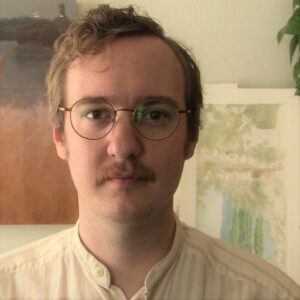
Andrew Grum Carr is an artist, writer, and teacher from St. Paul MN. He writes short fiction and works in watercolor. He loves cinema, the library, and Saturday night jazz. You can find his artwork at www.andrewgrumcarr.com or follow him on Instagram @andrewgrumcarr.
header image: “The Memorial to the Murdered Jews of Europe at dusk“ by Infomastern is licensed under CC BY-SA 2.0 (cropped)
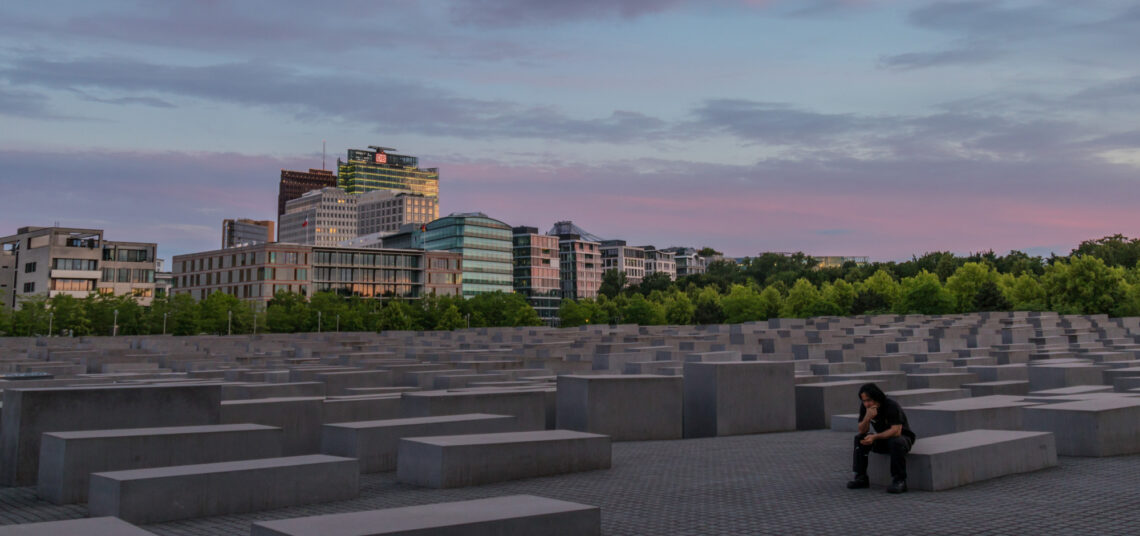


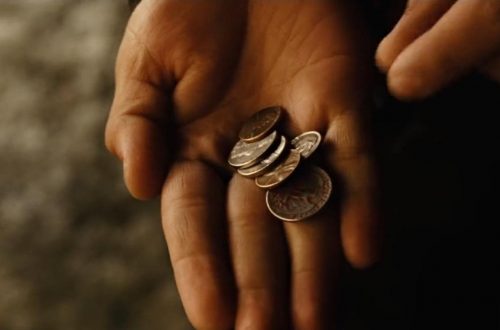
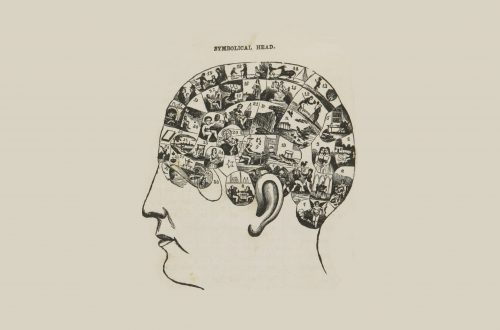
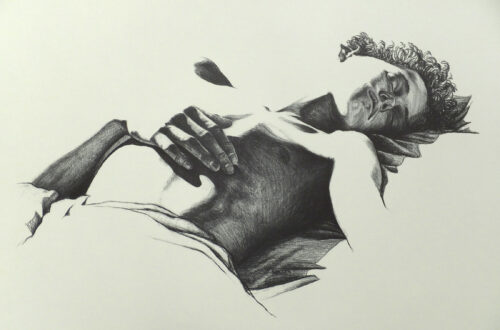
One Comment
Henry Lewis
Excellent. I love your reflection. Yes, places can take us to another place of knowing. And shared experience (particularly harsh and cruel ones) offer a place to sit together and not hate each other for no good reason, a place to share the pain and silence and emptiness of being alone. Perhaps we find a new friend there. Perhaps.